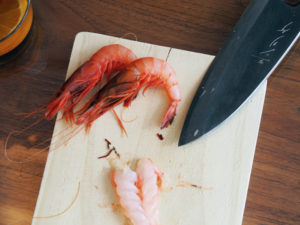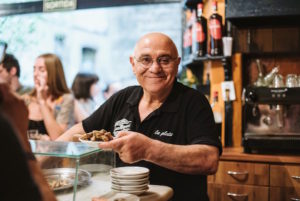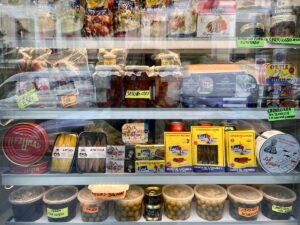Last Updated on July 22, 2024 by Cassandra Gambill | Published: January 14, 2020
Is there a food that evokes strong, vibrant memories from your younger years?
If so, consider it your very own madeleine de Proust.
In Marcel Proust’s book “In Search of Lost Time,” he waxes poetically about how madeleines, dipped in his cup of tisane (herbal tea), reminded him of his childhood, when his aunt Léonie used to give him a bite of her madeleine every Sunday morning. It’s a reference which has now made its way into modern French culture as the expression, “What is your madeleine de Proust?”—or in other words, which food reminds you of your childhood?
Behind the Bite: Madeleine (Devour Paris)
Being the curious foodies we are, we couldn’t resist the urge to round up some of the most beloved childhood bites and foodie memories from across the Devour Tours team. Here are some of our own madeleines de Proust (along with recipes in some cases if you’re looking to try something new in the kitchen!).
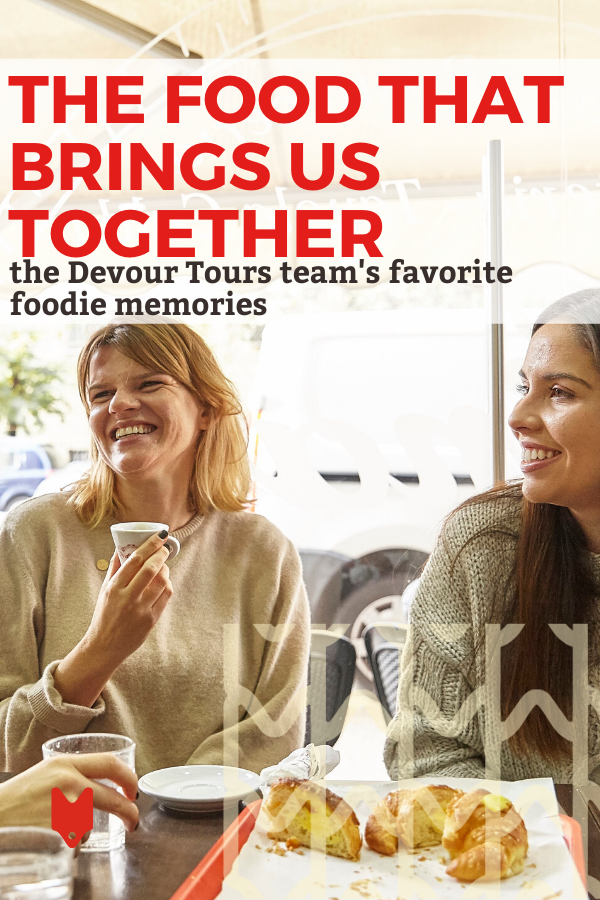
Cait English, Madrid Operations Manager
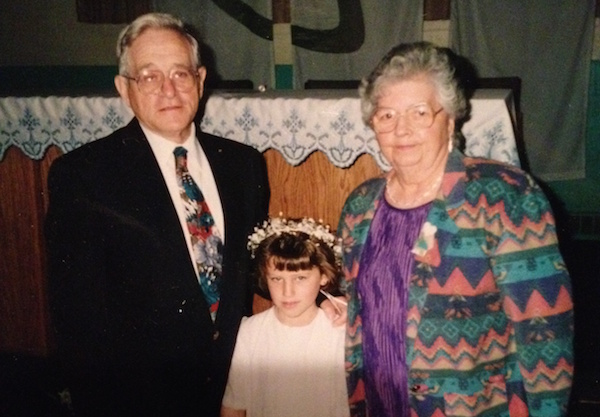
When I think of home, I think of my grandma’s baked macaroni and cheese. My grandpa worked for the Prince pasta factory, which has since closed, in Massachusetts. He would bring home dented boxes of pasta that he got at a massive discount or for free. When I went to their house for lunch, my grandma would make her mac and cheese.
Other people in the family caught wind of this and started showing up too, proving that food does bring people together. She used simple ingredients and always served it with hot dogs on the side, which I think she did especially for me. She always made it in the same deep white casserole dish but the best part was the topping: broken up Ritz crackers dotted with butter browned by the heat from the broiler turned on just for the last few minutes.
Find Caitlin online @prntjunky.
Courtney Brink, Customer Service & Human Resources

It may seem silly, but my favorite food memory is Chex Mix! It’s a type of savory, crunchy, salty snack mix made up of cereal and pretzels, and sometimes nuts and chocolate.
Whenever I go home to visit my parents, the first thing my dad does when we get in the car at the airport is hand over the freshly made Chex Mix. All my life we’ve been making it, whether it’s for the holidays, a rainy day, a party at school, or for a movie night in. The recipe has changed over the years, as we’ve tinkered with different ingredients and measurements to get it just right. What’s funny is that my brother and I like our Chex Mixes different, so my parents always have to make two batches, one for each of us.
On Thanksgiving Day I’m always full off of Chex Mix before the meal even begins, and Christmas morning to me always smelled of Chex Mix baking in the oven. As most of the ingredients are difficult or impossible to find here in Europe, I’ve tried my best to adapt the recipe each year to make my own, but it’s just not the same. While my brother and I rarely get to spend holidays together anymore, he always teases me by sending me pictures of his Chex Mix every year. My parents are coming to visit in a few weeks, and while I can’t wait to see them, the first thing I’m going to ask them when they get here is, “Did you bring the Chex Mix?”
Courtney’s family’s Chex Mix recipe
Ingredients:
- 3 cups (380 grams) Corn or Rice Chex™ cereal
- 5 cups (640 grams) Crispix™ cereal
- 2 cups (250 grams) Honey Nut Cheerios™ cereal (I like the sweet touch, but you can use any kind of cheerios you prefer!)
- 2 cups (250 grams) pretzel sticks (OR 1 cup pretzel sticks, 1 cup potato sticks for my brother’s recipe)
- 1 cup (130 grams) nuts (optional, I prefer mine without. You can add any kind of nuts you want!)
- 6 tablespoons (85 grams) butter or margarine (for vegan)
- 6 tablespoons (90 milliliters) Worcestershire sauce (choose a plant-based option for vegan recipe)
- 1 1/2 teaspoons Lawry’s™ seasoned salt (I bring mine to Madrid from the US)
- 3/4 teaspoon garlic powder
- 1/2 teaspoon onion powder
Instructions:
- Preheat oven to 250 degrees Fahrenheit/120 degrees Celsius.
- Add all cereal to a large dish (I prefer clear Pyrex).
- Melt butter or margarine in the microwave or over a stovetop. Once melted, add Worcestershire sauce, Lawry’s salt, garlic powder and onion powder, and stir well. Using a rubber spatula, slowly and evenly pour butter mixture over the cereal and mix until everything is evenly coated.
- Pop into the oven for 15 minutes, then take out of the oven and stir. Repeat this step four to five times or until cereal is crunchy, so about an hour to an hour and 15 minutes of total cook time. Enjoy!
- Extra tip: add 1/2 cup M&M’s to the Chex Mix after you’ve taken it out of the oven for the last time, making sure to add them while the Chex Mix is still hot. This is my brother’s preferred Chex Mix, but I prefer it without!
**Please note that this recipe is adapted from the original Chex Mix Party Mix recipe, and is made to be extra flavorful (it has three times the original amount of Worcestershire sauce! I like mine extra dark and crunchy, but if you prefer yours the original way, I’d recommend sticking to the recipe on the Chex Mix box or website. Also, sadly Chex and Crispix can only be found in the US as far as I know, so when I make it here in Europe I use Shreddies cereal or anything else I can find that is similar in texture.
Find Courtney online @corkybrink.
James Blick, COO & Co-Founder
It’s so simple, but my favorite food memory is sitting in our kitchen as a child with my mother preparing food beside me. And serving me a plate of pork schnitzel with mashed potatoes (DOLLOPS of butter) and peas. Perfect!
Find James online @jamesblickspain.
Claudia Sophie Ordinas, Devour San Sebastian guide
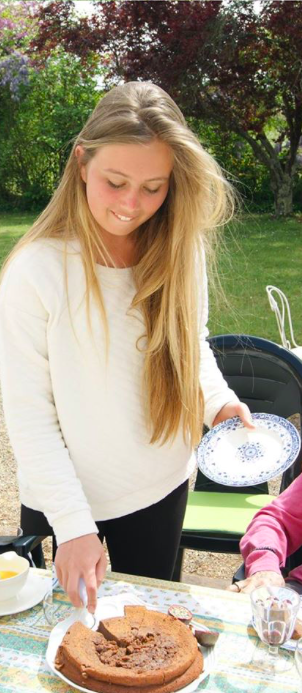
Négrillon is a chocolate, mousse-like warm cake that has been passed from generation to generation in my French family. What makes it special is that it’s a big, spongy chocolate cake, with a moussey texture in the middle. It is served warm, and it has more butter than chocolate in the recipe—that’s how French people would serve it.
Claudia’s family’s négrillon recipe
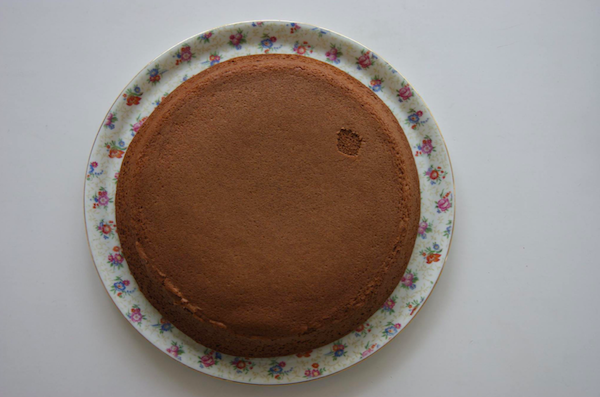
Ingredients for one cake:
- 6 eggs
- 200 grams (7 oz) dark chocolate
- 250 grams (1 cup) butter
- 100 grams (1/2 cup) sugar
- 75 grams (2/3 cup) flour
- Pinch of salt
Instructions:
- Cut the butter and the chocolate into cubes and melt over a low heat in a saucepan, stirring with a wooden spoon every once in a while.
- In the meantime, preheat oven to 200 degrees Celsius (392 degrees Fahrenheit) and grease a large cake pan.
- Separate the egg whites from the yolks.
- Add a pinch of salt to the egg whites, and beat them until white peaks form.
- Add the sugar to the egg yolks and beat it until it whitens and becomes fluffy.
- Sift the flour into the egg yolk mixture and slowly fold it in.
- Once the chocolate is melted, fold it into the egg yolk mixture again. It is very important to not overmix, otherwise the dough will lose its air.
- Finally, slowly incorporate the egg whites, and immediately put the mixture in the cake pan and bake for 20 minutes.
- The cake should come out very jiggly. Plate it and serve with something acidic, like raspberry coulis or mango ice cream. Et voilá!
Find Claudia online @claudiaordinascuisine.
Hayley Salvo, Seville Operations Manager
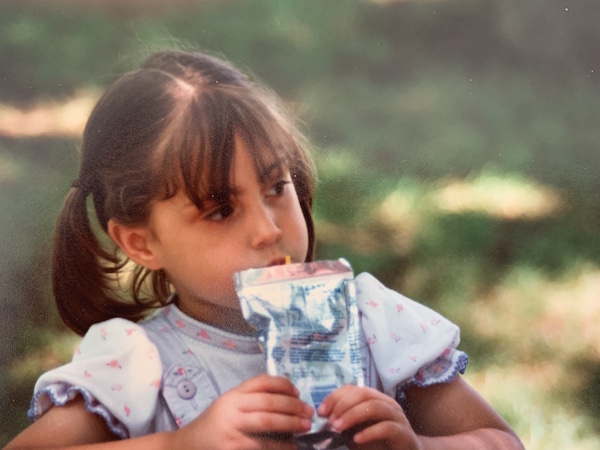
From a very young age I was a food lover and admittedly a bit too preoccupied with when and what my next meal would be. Once, on a long car trip through Texas, I was questioned about why the clouds moved and responded, without skipping a beat, that they were looking for food!
My favorite food memory doesn’t involve one particular dish, but how much I absolutely loved eating as a kid. To this day my family still talks about Thanksgiving 1987. That November, I was just shy of 3 years old and beginning to walk and talk with confidence. I started exploring the living room before the whole family sat down to eat and when I got to the dining room, I put my tiny hands up on the table’s edge and peered at the endless spread in front of me, exclaiming, “Oh boy! Too much food!”
To this day, no Thanksgiving meal passes without the whole family joining in the joyous exclamation: “Oh boy! Too much food!”
Find Hayley online @hayleycomments.
Rachel Schneidmill, Marketing Director
Even though my parents have been divorced my whole life, both of them observed the tradition of making weekend pancakes when I was a child. Since I am and always have been a late sleeper, on Saturday mornings I would wake up to the smell of pancakes cooking in the kitchen. Without a doubt, there were always bananas, chocolate chips and a whole lot of Vermont maple syrup (the real stuff, no Aunt Jemima in our homes).
Find Rachel online @rackle31.
Meredith Miller, Customer Service Manager
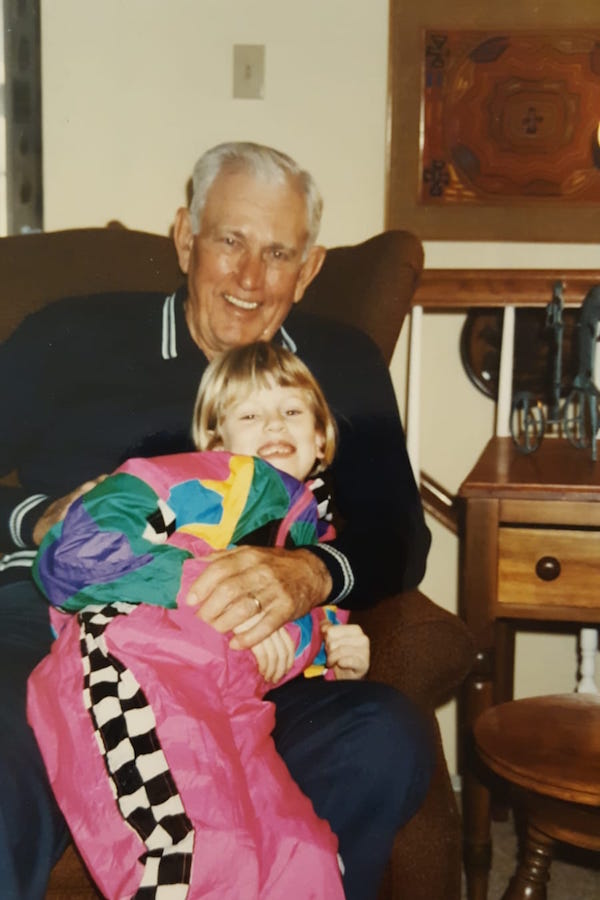
My granddad (my mom’s dad) was famous in my family for making just two things: martinis and cinnamon toast. Sadly, he passed before I ever got to try one of his martinis, but as a child one of my favorite treats was his cinnamon toast.
When we visited him, my sister and I would wait excitedly each morning at the table while he prepared something that was so simple but that made us feel so special. It’s remained one of my favorite memories of him all these years later.
Meredith’s granddad’s cinnamon toast recipe
Start with sliced white bread. Smear one side evenly with soft butter. Shake a sugar/cinnamon mix on top—as thin or thick as you like! Set the bread on a tray under the broiler and wait for about a minute. It’s about as fast and easy as a recipe can be!
Lauren Aloise, CEO & Co-Founder
My favorite food memories revolve around my grandparents’ dining room table. Made of solid mahogany, it was a far cry from the IKEA table I own today. It officially sat eight people when extended, but somehow it always squeezed in just enough chairs for aunts, uncles, and cousins to dine together.
It was at this table where I fell in love with food. I recognized early on that food brought us together, stimulated conversation and made people laugh. I realized that as long as there was food on the table, we’d be together as a family.
And my family took food seriously. We started the meal with a huge Italian antipasti: marinated olives, sun-dried tomatoes, soppressata sausage, fresh mozzarella cheese…all of the delicacies from the motherland. As Italian-Americans, maintaining these food traditions was our duty.
After the antipasti, we had soup. My grandma made tiny meatballs in a chicken broth. She called it Italian wedding soup. Next up was my favorite course, pasta! We’d each get three enormous ravioli stuffed with fresh ricotta cheese and smothered in my grandma’s homemade sauce. If I was lucky, I’d sneak an extra once everyone was served.
By the time the meat course came along, I was often bored (and full) and would run off with my siblings and cousins to play. My grandma’s basement was a treasure trove of nicknacks, and the perfect place to get into mischief. But before we could cause too much trouble, we were called upstairs for dessert.
First up: fruit and nuts. My grandfather would roast chestnuts and we’d get to use the pretty silver nutcrackers to crack open hazelnuts, almonds, and walnuts. I always took a bite or two of my grandfather’s pear, too. Then we had Italian pastries with impossible names to pronounce (try saying sfogliatelle)! And lastly, because we were Italian-American, after all, we had the American cakes and pies—my mom’s famous carrot cake, my aunt’s store-bought coconut cream pie, and sometimes even a jello mold.
I would give anything to have one more meal with my family at this table. And since that’s not possible, I take my responsibility to carry on these traditions seriously. It may be over an IKEA table, but my kids will learn the joys of food and family.
Find Lauren online at spanishsabores.com.
Abbie Stark, Rome Operations Manager
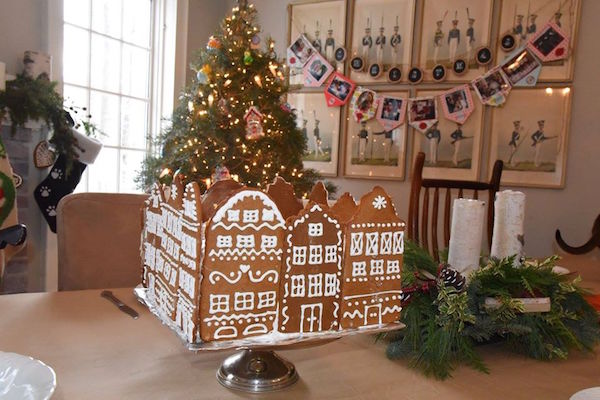
Growing up, family time at home always involved baking cookies of some kind. Especially during the holiday season, my parents always made sure the pantry was stocked with a variety of desserts and that we kids (I’m the oldest of five!) got involved. My mom would make the intricately decorated gingerbread house with piped snow, icicles and hard candy windows to show off the flickering lights. But my dad, who is known for two desserts—his cheesecake and sugar cookies—would take over the cookie baking and decorating with all of the kids.
We used a very simple recipe for sugar cookies, took ages picking out the different Christmas cookie cutters we wanted to use that year, and then got on to the fun part of decorating. Using five different icing colors, we covered all of the cookies with royal icing while also managing to get half of it in our mouths. We’d walk around the house for the rest of the day with bright green, pink or yellow tongues, and then jealously hoard our creations for the next week.
Abbie’s dad’s sugar cookie recipe
Ingredients:
- ½ cup (113 grams) butter, softened
- ½ cup (95 grams) shortening
- 2 cups (450 grams) sugar
- 1 teaspoon baking soda
- 1 teaspoon cream of tartar
- ⅛ teaspoon salt
- 3 egg yolks
- ½ teaspoon vanilla
- 1 ¾ cups (224 grams) all-purpose flour
Instructions:
- Preheat oven to 300 degrees Fahrenheit (150 degrees Celsius). In a large mixing bowl, beat butter and shortening with an electric mixer on medium to high speed for 30 seconds. Add sugar, baking soda, cream of tartar and salt. Beat mixture until combined, scraping sides of bowl occasionally. Beat in egg yolks and vanilla. Beat in as much of the flour as you can with the mixer. Stir in any remaining flour.
- Shape dough into a 1/2 inch sheet and use cookie cutters to cut out all the cookies you can fit from the sheet. Place cookies two inches apart on ungreased cookie sheets.
- Bake in the preheated oven for 12 to 14 minutes or until edges are set; do not let edges brown. Cool cookies for one minute on cookie sheet. Transfer cookies to a wire rack and let cool.
Find Abbie online at lavitaroma.com.
David Pope, Seville Assistant Operations Manager
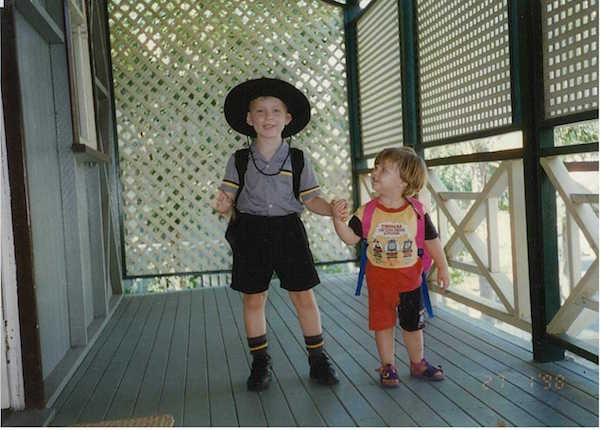
When I was a kid, I would make Anzac biscuits every year with my mum. These cookies are an Australian institution, on par with Vegemite on toast or killer spiders under your bed. But Anzacs aren’t some sort of unique Australian ingredient—they’re people!
During the first World War, simple cookies of rolled oats, golden syrup (a type of amber-colored sugar syrup), butter, flour and coconut were made by Australian families to send to the troops abroad. Australian and New Zealander soldiers were referred to by their unit name, and called “ANZACs”—and so the biscuits were born!
But the problem my mum and I had was that we only made these cookies once a year. We didn’t have a written recipe, so we’d spend half our time trying to remember what we put in the cookies last year. We had as much vintage variation in our cookies as a winemaker does in Burgundy! Some years would see a bumper crop of cornflakes make its way into the recipe, while other years would feature raisins, chocolate chips, or an extra pinch of salt. But no matter what, the cookies were always delicious!
Find David online at everydayfoodblog.com.
Jessica Alcorn, Account Manager
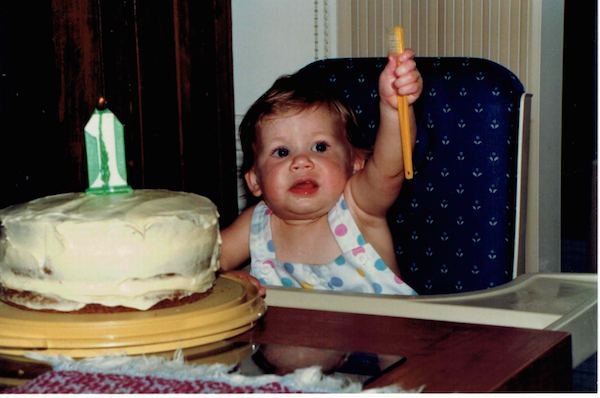
My favorite food memory is my Grandma Edith’s coffee cake—it’s something that reminds me of all the time I spent with my grandma, cousins, aunts and uncles growing up as a kid. Grandma’s coffee cake was famous in our family—it was at every family gathering and each family was sent at least one to take home. She would also make them for her friends and neighbors at Christmastime. The recipe makes eight loaves and my grandma would sometime make up to 32! It all started with my great-grandparents, who lived on a farm in Missouri. It was based on a German stollen bread recipe that we eventually just started to call coffee cake.
My grandma was extremely active in her community and always had something new she was working on. But I think her greatest pride was her family, and she always made sure that we kept up with each other by organizing at Christmas and a week at the beach in the summer. She even started a monthly family newsletter that we still do today!
My Grandma Edith passed away in 2014, but my Aunt Janice still makes her coffee cake at our family’s annual “Second Christmas.” Every time I eat it, I’m reminded of her and how much she cared for her children and grandchildren.
Jessica’s Grandma Edith’s coffee cake recipe
Ingredients:
For the dough
- 1 cup (237 milliliters) lukewarm whole milk
- 3 teaspoons active dry yeast
- 1/2 cup (100 grams) granulated sugar
- 4 cups (512 grams) all-purpose flour
- 1 large egg
- 2 large egg yolks
- 3/4 cup (1 1/2 sticks) unsalted butter, at room temperature so it’s very soft
- 2 teaspoons high-quality pure vanilla extract
- zest of one lemon
- 1 teaspoon salt
- 3/4 teaspoon ground cardamom
- 3/4 teaspoon ground nutmeg
- 1/2 teaspoon ground cinnamon
For the glaze & dusting:
- 1 stick unsalted butter, melted
- powdered sugar for generous dusting
Instructions:
- Stir the yeast and 2 tablespoons of the sugar into the lukewarm milk and let sit in a warm place for 10–15 minutes until very frothy.
- Place the flour, remaining sugar, egg, egg yolks, butter, vanilla extract, lemon zest, salt, cardamom, nutmeg and cinnamon in the bowl of a stand mixer fitted with a dough hook. Add the yeast/milk mixture. Use a spoon to stir the mixture until it comes together. Knead the dough on the bread setting for 7–8 minutes. Remove the dough ball, lightly spray the bowl with a little oil, return the dough ball, cover loosely with plastic wrap and place it in a warm place or lightly warmed oven (just barely warm), to rise until nearly doubled in size, at least 1 hour.
- Punch down the dough. If the dough is too wet to handle, add a little bit of flour until the dough pulls away from the sides of the bowl.
- Turn the dough out onto a floured work surface and cut it in two equal halves. Press or roll each piece into an oval to about one-inch (2.5 cm) thickness. Use the bottom edge of your hand to press down along the length of the cake towards the right of the center to create a divot. Place the cake on a lined baking sheet. Cover the stollen loosely with plastic wrap and let them rest in a warm place or lightly warmed oven for 40–60 minutes until puffy.
- Towards the end of the last rise, preheat the oven to 350 degrees Fahrenheit (175 degrees Celsius) and bake the cake for 30–40 minutes or until golden. You can use an instant-read thermometer to aim for an internal temperature of 190 degrees Fahrenheit. Let the cake sit for five minutes, then use a toothpick to poke holes all over the cake (this will allow the butter to seep in), then generously brush the stollen with the melted butter while the cake is still warm. Immediately sprinkle with a generous amount of powdered sugar, rubbing it into the creases and down the sides. Let the cake cool completely. You may want to give it another dusting of powdered sugar once cooled.
Find Jessica online @jesslalcorn.
Victoria Bätz, Devour Barcelona guide
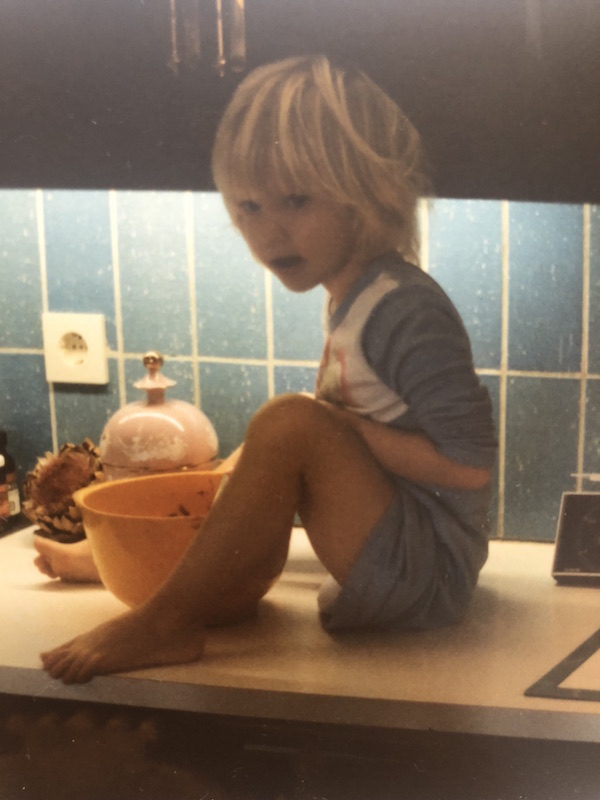
It’s not very classy and does not show off my great taste, but what really brings me back to my childhood is a special kind of cinnamon bun that’s called a kanelsnäcka. I dare to say that in Sweden we have the best cinnamon buns in the world but the kanelsnäckor are not the impressive ones—they’re bought premade in plastic bags (IKEA might even be selling a version of these).
We used to bring them to the beach as part of a bigger picnic when we went with the entire family (yes, we do go to the beach in Sweden!). I grew up right next to the beach but it was pretty rare that all of us would go down together. Biting into ones of those buns transports me to my 7-year-old self sitting on that beach surrounded by my family eating kanelsnäckor with a little bit of sand mixed in with the cinnamon.
Find Victoria online @vicbat.
Irene Ojeda Iglesias, Devour Seville guide
When I think about my childhood, I always think about patatas fritas con huevo y filetes (fries with a fried egg and grilled steak) Of course, I ate all that with bread—I mixed it into my dish and I just loved it. I can say it is still my favorite meal.
I also would love to mention the bocadillo de tortilla de patatas y filete empanado (Spanish omelet and breaded steak sandwich) that we used to eat when we went to spend the day on the beach. I am from Seville so we went to spend the day in Matalascañas, the best moment of the day was sandwich lunch time under the umbrella.
Hannah Bächtold, Devour Barcelona guide
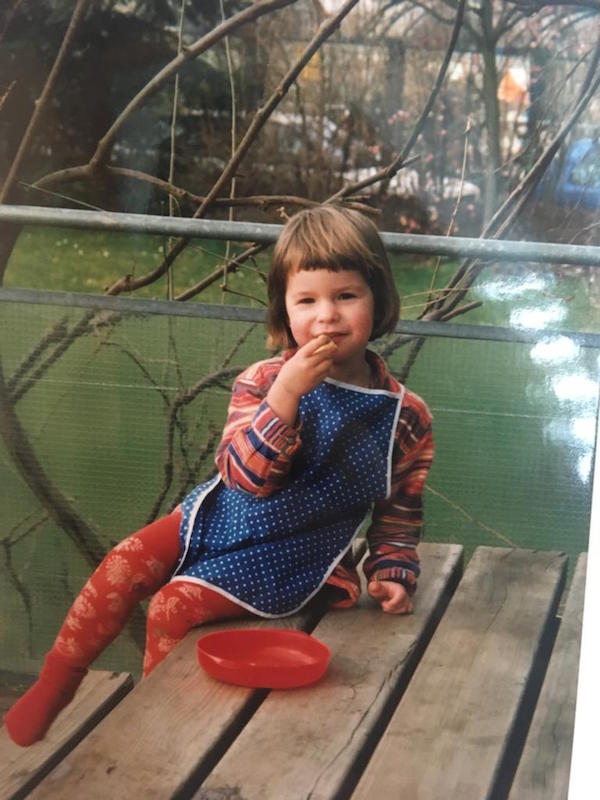
It was kind of hard picking one, but I finally decided on “Gaggobrot” or “Ovobrot.” In English, I would describe this “dish” as a slice of bread with a spread of butter and some typical Swiss cacao powder on top of it—either cacao (Caotina) or Ovomaltine (a malt-based powder). Every time I had friends over, we were usually playing outside, and my mom would make us this as a “Zvieri” (4 o’clock snack). She brought a big plate outside filled with this classic. Everyone loved it so much and it was usually the highlight of the day.
Hannah’s Gaggobrot recipe
There is not an actual recipe, but the three ingredients are important. The bread should be a typical Swiss thick round loaf (for example, St. Galler bread), the butter also must be real, high-quality Swiss butter and then, of course, one of the chocolate powders mentioned before. Add enough butter so that the powder really sticks to it.
Find Hannah online @cuisinehistory.
Megan Lloyd, Devour Seville guide

The smell of Mama Ninfa’s does not daintily stroll down Navigation Street street like the air from a Parisian bakery. Its carnivorous char and toasted wood is most certainly seared into the crevices of the Houston, Texas parking lot and jolts one’s stomach into a fit of crazed hunger that can only be satisfied by the almighty Tex-Mex.
As a kiddo, this jolt would be momentarily forgotten by my sights of the tortilla station. I would plant my little self in front of the glass window and watch ladies pat mounds of pillowy dough into thin, lard-laden rounds. They would throw them onto the fiery flattop and use their bare hands to quickly flip them, sliding stacks into plastic containers to be quickly whisked off to hungry tables. That same dark corner still welcomes guests today, promising them chewy marvels to hold every drop of fajita grease.
I was too short to see then what I see now when we wait for the annual table at Ninfa’s. Just behind the tortilla ladies, the kitchen throws down two-foot slabs of beef onto the smoking grill the size of a twin bed, fire blazing beneath. Men circle around the center station to plate up crispy tacos, roll enchiladas, and spoon refried beans. It is constant, it cranks, and it sends clouds of mesquite into the dining room, hazing the vision with its fragrant Maillard reaction.
Before we’ve even warmed up our chairs, servers drop creamy tomatillo and spicy red salsa onto our table with a glistening mountains of chips. My dad orders his Negra Modelo as he always does, and my mom her Paloma. My brother and I begin the race of chip to tomatillo salsa, to roasted tomato salsa to mouth, now washing the salt down with frosty tequila and lime.
Trays of smoking fajitas pass by like burning pyres. As a kid I would clench in fear and order the cheese puff instead: an inflated and fried corn tortilla drenched in chile con queso. To this day the pale yellow puff is an explicable marvel. It was always crispy, always coated in that thick, zippy, industrial cheese, and somehow still hollow.
The rest of the meal comes quickly on an oversized tray: tacos al carbón for mom, enchiladas with extra onions for dad, fajitas for the adult me and brother. We inhale as though the food will disappear. We dunk tortillas in chile con queso, spoon extra salsa onto enchiladas, and dig up caramelized onions from the char of the cast iron fajita dish. We eat to the hum of the sizzle and the ranchera music and the eternally crowded dining room.
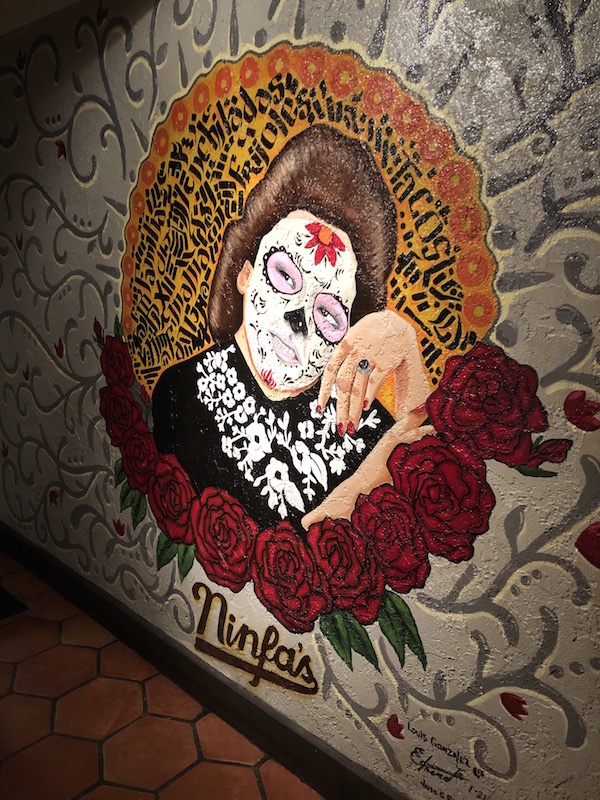
From the outside it seems a lot has changed at Mama Ninfa’s. They’ve expanded, redone the parking lot, given it a paint job or two, and proudly remounted the sign to boast their presence in East Downtown. But the air and feel and sound inside has only been amplified by time and the constant roar of the kitchen.
A new mural of Mama Ninfa covers an entire back wall to match the oversized photo that sits at the entrance of the restaurant. But this time she’s depicted as a Día de Los Muertos ghost, with a calming skull-candy face, flowers in her hair, and eyes that follow the servers and patrons. She is alive. She is eternal. And she watches over her masterpiece of a family and food—a legend so far exceeding fusion cuisine.
Mama Ninfa’s is Houston at its best. It is a proudly heterogenous crowd of age, race, gender, language. It is loud, fast, big. It is beautiful in its grunge. It is warm in all its southern charm, smiling servers and full guests. It is tables of first birthday parties and first dates, of hundredth birthday parties and hundredth dates. To me it’s an everlasting vision of my family: of my Texas-born grandma coming to town from South Carolina to get her fix with a red can of Tecate. It’s my dad flooding his plate with whatever sauce within his reach. It’s my mom closing her eyes and saying how much she loves refried beans like it’s the first time she’s tried them. It’s all of us now, bringing our families and filling our tortillas and nodding to Mama Ninfa as we walk out the door.
Find Megan online at meganfranceslloyd.com.
Ashley Duncan, Content Manager
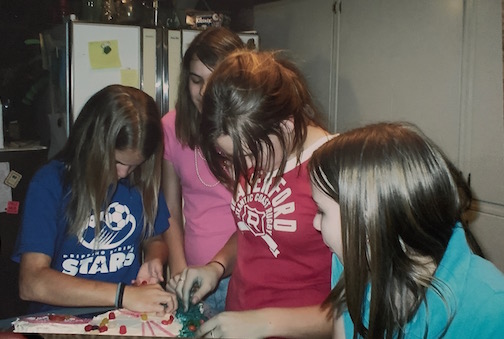
Growing up, we usually spent Easter at my grandparents’ house with my cousins. Along with games of rummikub and hunting Easter eggs, a staple every year was the bunny cake: two round yellow cakes cut and decorated in the shape of a rabbit.
Along with my sister and cousins, I would keep an eye on the oven, waiting impatiently for the cakes to cook. After they had cooled and been frosted, it was time for the best part: decorating. This was the magic moment that changed two round cakes into a rabbit with jelly bean eyes, sour straws for whiskers, and a bow tie of coconut flakes dyed with food coloring—basically any child’s dream ingredients all in one place. The important thing about the bunny cake wasn’t how it tasted (I never was a fan of coconut flakes); it was the tradition of gathering in my grandmother’s kitchen year after year and creating something together.
Ashley’s grandma’s bunny cake recipe

Instructions from my grandmother, Dorothy: “For the bunny cake, make a two layer cake. I use a Duncan Hines yellow cake mix. One layer is the body of the bunny. Using a salad plate, cut the other layer into ears and the bow tie. If you cut the ears, the rest of the layer will be the bow tie.”
Frost and decorate to your liking, using candy, icing, coconut flakes and anything else you’d like to achieve that bunny look.
We’re not the only ones with stories behind the food we love—each of our destinations has plenty of their own. Come join us on a food tour and discover a wealth of fascinating foodie stories just waiting to be told.
